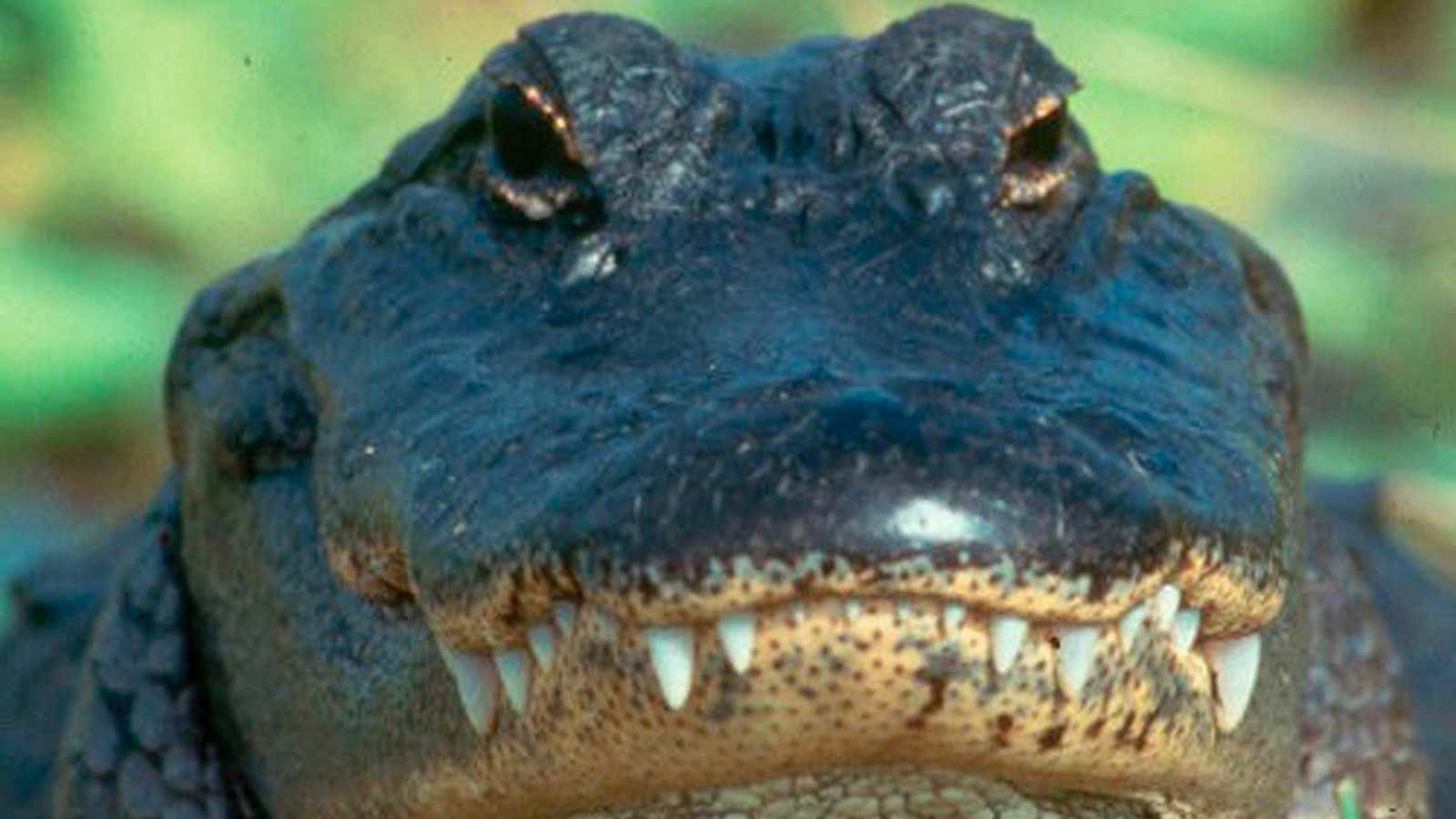Florida’s alligators have reason to feel that they can go where they please and to see people as trespassers. These giant reptiles have been living in the swampy state far longer than any humans. They are classified as reptiles but are actually more closely related to birds and are direct descendants of prehistoric dinosaurs. Alligators have inhabited Earth’s swamps for about 80 million years.
Still, when a gator measuring 11 ft and weighing 600 lbs (3.3 m, 272 kg) was spotted wandering a Florida neighborhood on April 19, officials from the Miami-Dade Fire Rescue Department—who happened to be on their way back to their station and spotted it on the side of the road—were naturally wary of this massive trespasser’s adventures in human territory. While the beast doesn’t break local records—the longest alligator measured in the state reached 14 ft and the heaviest weighed in at more than 1,000 lbs, according to the Florida Fish and Wildlife Conservation Commission—they were shocked by its size.
Officer Ignatius Carroll Jr. told the Miami Herald on April 20 that the fire crew at first assumed the thing they saw was a body, possibly dead. But as they approached, they realized they were dealing with a giant reptile and one that was very much living and breathing. The team called the police and Fish and Wildlife Conservation Commission representatives, attempting in the interim to safeguard the gator from cars (and cars from the gator, presumably) while keeping a cautious distance themselves.
The humans apparently had little to fear, as the creature wasn’t eager to interact either. According to Carroll, it slowly but surely—pausing every so often—ambled up the driveway of a home and then crashed easily through the chain-link fence surrounding the backyard, where it took refuge and waited. “We watched that gator go through that fence like nothing,” Carroll said.
The gator was still waiting when a Fish and Wildlife trapper arrived on the scene to remove the creature and transport it to a less urban environment. Sadly, however, it had been a rainy night, and slipping a rope around the beast’s neck to lead it to safety proved impossible under the conditions. Authorities report that they were forced to euthanize the animal.
Floridians are not entirely unaccustomed to gator invaders. In 2016, a gator estimated at 15-ft long wandered past the third hole at the Buffalo Creek golf course in Palmetto. It was captured on camera, slowly meandering. The video was posted on YouTube and has been viewed more than 25 million times.
In 1967, the US Fish and Wildlife Service classified the American alligators of Florida as an endangered species, but the animals have since recovered and are thriving in the wild. In 1985, the species was reclassified as “threatened due to similarity of appearance” (pdf). Because these gators closely resemble endangered crocodiles and other dwindling alligator species—so much so that experts may find it difficult to distinguish them—and because they are hunted for their hides, these swamp creatures who have long made Florida their home remain listed.
